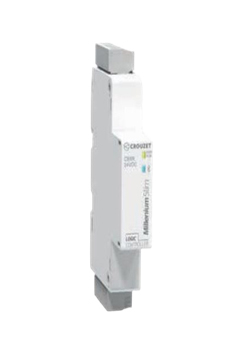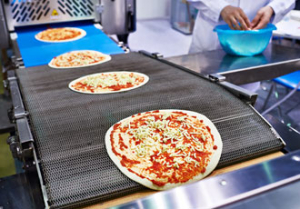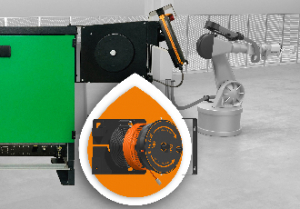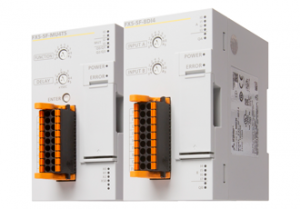Be in control… with the right robot controller

The current trend of robot control is changing with PLC-based solutions offering different benefits and opportunities over the traditional dedicated robot controllers. So what needs to be considered when selecting the right solution for the application? Here Barry Weller, Product Manager at Mitsubishi Electric, looks at how to determine which robot control option is best.
Whilst it may look like a relatively simple choice, selecting a robot control solution greatly influences the overall machine capabilities and ease of set-up and operation. Getting it right can help improve system flexibility, avoid compromising performance and productivity, plus simplifying commissioning for machine builders and integrators, whilst minimising changeover time for operators.
By following a few best practices and principles, users can be sure to select a control option that meets the requirements of a given application whilst maximising productivity and Return On Investment (ROI).
PLC-based control options can help build a tailor-made system
With a number of current PLC or motion control products, such as the Mitsubishi Electric iQ-R, the kinematics to control many different types of system are available. This enables an Original Equipment Manufacturer (OEM) to design and build a bespoke robotic solution, for example; a 2-axis gantry pick and place or a 4-axis delta arm for packaging.
While dedicated robot controllers provide off-the-shelf solutions that are suitable for a wide range of applications, PLC based control options can empower robot integrators to develop their own bespoke systems.
There is an argument that suggests that designing a bespoke system may offer a price advantage as it is often less expensive to buy a kit of parts and build the system from scratch than invest in a traditional robot arm. Indeed, this may suit an OEM with multiple systems to build and would probably show cost savings. Of course, the application will determine the best approach but designing in this way can allow an OEM to create a tailor-made solution.
An example of an application like this would be the control of a bakery tin store. The motion profile of this application is a very simple pick and place operation with maybe 2 or 3 axes of control; however, the mechanics can be physically very large, having to span tens of metres of the store. Using the built-in kinematics of the iQ-R PLC system, the setup times and programming of the control system can be reduced, as the tin positions can be taught or the co-ordinates calculated in the control system.
This system also allows other axes to be easily integrated into the system; for example the system could be expanded to include the control of the delivery system, bringing the tins into, or away from the store.

When should you opt for dedicated robot controllers?
Choosing a PLC-based robot control option may seem like the most cost-effective way to go. Yet, it is important to consider the design time of the mechanical system, the flexibility required from the manufacturing cell, the cell footprint and also the configuration and engineering time. This is taken care of by selecting an off the shelf dedicated robotic system. A typical 4-axis SCARA (Selective Compliance Articulated Robot Arm) system for instance can now be supplied at a very competitive cost. The robot mechanical system is already designed and its CAD model can be imported into the machine design saving time and cost. When the system is being built the robot is also simple to install and needs just four bolts to mount it into a machine and can be programmed in less than an hour to do a simple operation.
The controllers contain hundreds of dedicated instructions that make the more complex functions such as tracking a product along a moving conveyor or complying with an external force, easy to integrate as they are already built into the system.
Further benefits come when machine safety is considered. Dedicated robot controllers have to conform to industry standards that cover their design, which includes safety. This means that it is much easier for the system designer to achieve an integrated safety system for the total machine by using compliant components.
Many alternatives, one comprehensive provider
If the choice between dedicated or PLC-based robot control is still in the balance, then of course manufacturers that provide both such as Mitsubishi Electric can support machine builders and robot integrators alike in selecting the most suitable alternative. Customers can choose between state-of-the-art PLCs and dedicated robot controllers to match the requirements of their systems.
The company offers advanced MELFA robot controllers, which allow users to programme the robots by using the powerful Mitsubishi Electric RT-Toolbox engineering environment. When PLC-based control is preferred, Mitsubishi Electric’s iQ Monozukuri Handling Suite empowers users to take control of movement and information management tasks. The suite features a handling application package and a control program that connects the MELSEC iQ-R PLC series of high-performance and scalable controllers with robots, HMIs and other compatible automation components.
In addition, when the best of both systems is needed, Mitsubishi Electric offers the unique option of integrating a dedicated robot controller directly into the PLC rack. The controller is compatible with the company’s iQ modular PLC platform, which can seamlessly integrate a range of different functional controllers along with I/O and networking options.
In the end, the control requirements and the physical attributes of the application often dictate which option is best but for machine builders and integrators alike, it would be sensible to adopt a flexible, integrated automation solution that offered choice and scalability.
Similar articles
More from Mitsubishi
- Want a robot but don’t know where to start? 11th June 2021
- A pizza challenge for Control Freaks 22nd April 2021
- Competitive factories need to leverage the power of data 15th April 2021
- Combining user-friendliness with high performance 16th March 2021












Write a comment
No comments